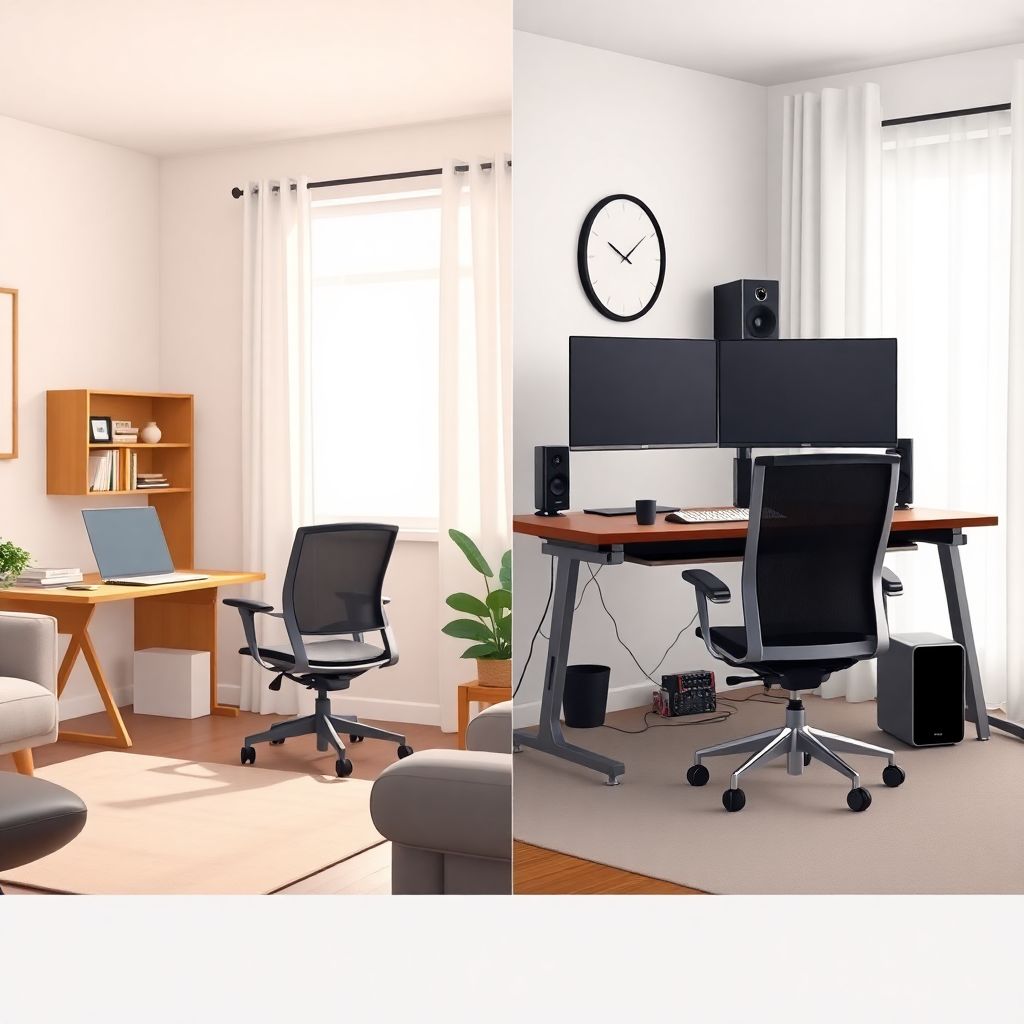Historical Background: How Home Offices Became a Necessity
Not too long ago, the idea of working from home was a luxury reserved for freelancers or remote tech workers. But things took a sharp turn around 2020, when the global pandemic pushed millions into remote work overnight. Suddenly, people were transforming corners of their living rooms into makeshift offices. What began as a temporary workaround has now become a long-term trend. Home offices are no longer optional—they’re essential for productivity, comfort, and mental clarity. As remote work cements its place in the modern job landscape, budgeting for a functional home office is not just smart—it’s crucial.
Core Principles of Home Office Budgeting

Before diving into purchases, it’s important to approach your home office setup with a clear strategy. Budgeting isn’t just about spending less—it’s about spending smart. There are three main principles to keep in mind:
1. Prioritize Functionality Over Aesthetics
That fancy neon keyboard might look cool, but does it improve your workflow? Probably not.
2. Think Long-Term Investment
Don’t look at this as a temporary cost. A good chair or desk can last for years if chosen wisely.
3. Set a Realistic Limit Based on Your Role and Income
A graphic designer might need dual monitors and high-end software, while a writer could get by with a laptop and a quiet space.
These principles help you avoid impulsive purchases and focus on what really enhances your productivity.
Comparing Budgeting Approaches: Minimalist vs. Comprehensive
There are generally two schools of thought when it comes to setting up a home office: minimalist and comprehensive.
Minimalists go for the basics:
1. A reliable laptop or desktop
2. A simple desk and ergonomic chair
3. Decent lighting
This approach is cost-effective and ideal for people with limited space or those just starting remote work. It focuses on essentials and keeps the budget typically under $500.
On the other hand, the comprehensive setup includes:
1. Dual monitors or ultra-wide screens
2. Standing desk converters
3. Noise-canceling headphones, webcams, and independent mic setups
4. Cable management systems and desk organizers
This setup can run upwards of $1,500, but it aims to mimic or even exceed the comfort of a corporate workspace. It’s perfect for people in creative fields, management, or those working full-time from home.
Real-World Examples: How People Budget in Practice
Let’s look at two professionals: Emma, a freelance writer, and David, a remote software engineer.
Emma’s budget was tight—she allotted $300. She bought a second-hand desk ($50), an IKEA ergonomic chair ($100), and spent the rest on lighting and a laptop stand. Her setup is simple but effective.
David took a different route. With a budget of $2,000, he invested in a sit-stand desk ($500), dual 27″ monitors ($600), a Herman Miller chair ($800), and high-end audio gear for cross-continent meetings. His setup not only boosts his workflow but also supports his back during long coding hours.
Both approaches work because they reflect each person’s needs and financial boundaries. The key is aligning your budget with your daily tasks.
Common Misconceptions About Home Office Spending
Let’s clear up a few myths that often lead to poor budgeting decisions:
1. “I need to buy everything at once.”
False. Start with the essentials and upgrade gradually as needed.
2. “Expensive means better.”
Not always. A mid-range ergonomic chair can outperform a pricey one if it suits your posture better.
3. “Tech is the most important.”
Actually, comfort and ergonomics often matter more in the long run. You can have the fastest computer, but if your neck constantly hurts, your productivity will suffer.
4. “It’s not worth spending money—I’ll go back to the office soon.”
Even hybrid work models require a decent setup. Think of your home office as a permanent backup plan.
Understanding these misconceptions can save you hundreds of dollars and a lot of headaches down the road.
Wrapping It Up: Balance Is Key

Budgeting for a home office is all about finding the sweet spot between functionality and cost. Don’t feel pressured to mimic Instagram-worthy setups or max out your credit card on the latest gadgets. Begin with what you truly need, adjust as your work evolves, and remember that a well-thought-out budget isn’t restrictive—it’s empowering. With the right mindset and a bit of planning, your home office can become a space that supports your goals, without draining your wallet.

